The 1920s marked a significant era in American history, known for the post-war economic boom and cultural blossoming, where jazz emerged as a defining feature of the times. This period, also called the Jazz Age, saw a dynamic evolution of jazz from its roots deeply planted in African-American heritage into a form of artistic expression that resonated across the United States.
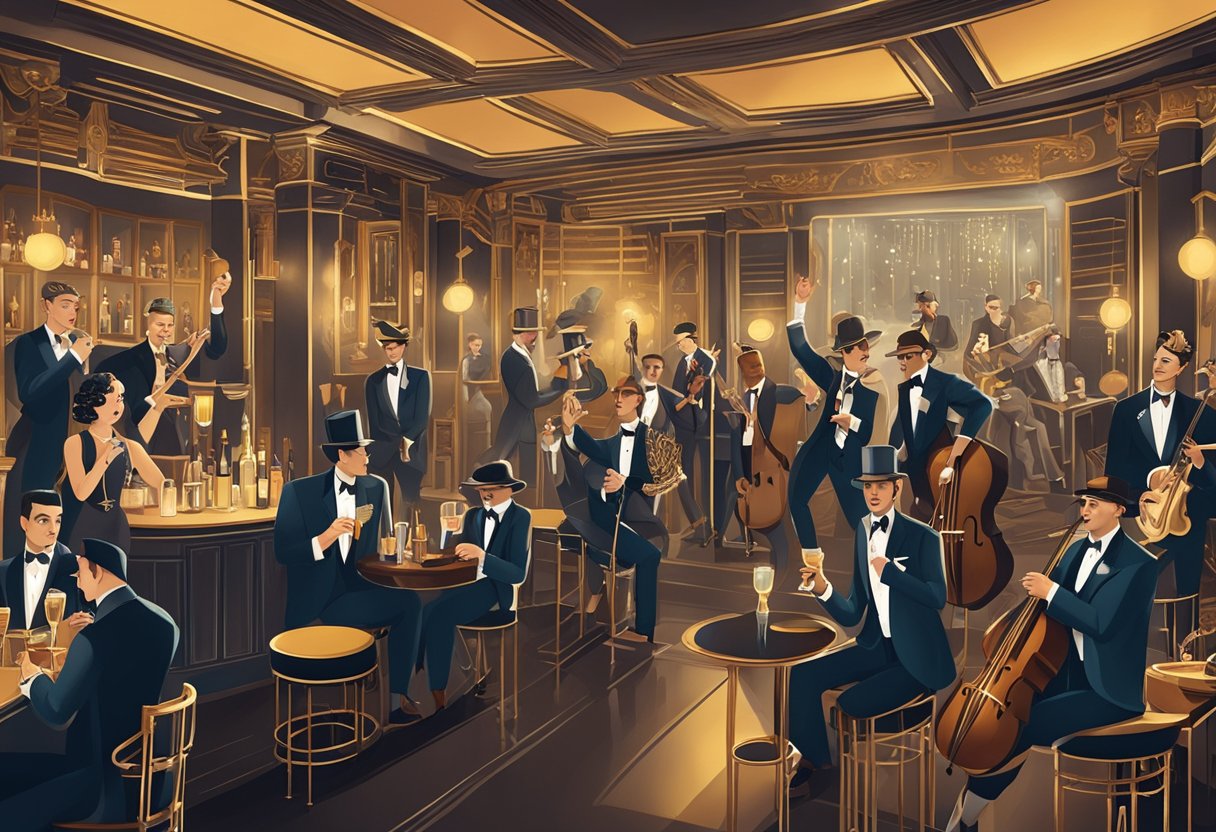
Jazz music became the heartbeat of the decade, influencing not just the realm of entertainment but also the social fabric of American life. As jazz spread through cities like New York and Chicago, it brought with it new styles of dance, challenged social norms, and even played a role during the era of Prohibition.
Key figures such as Louis Armstrong and Duke Ellington steered jazz into uncharted territories with their innovative compositions, leaving an indelible mark on the landscape of music and American culture at large.
Key Takeaways
- Jazz in the 1920s shaped American culture and its global influence.
- The era supported the emergence of significant musicians and new jazz styles.
- Social and economic factors contributed to jazz’s evolution during the Jazz Age.
Origins of Jazz
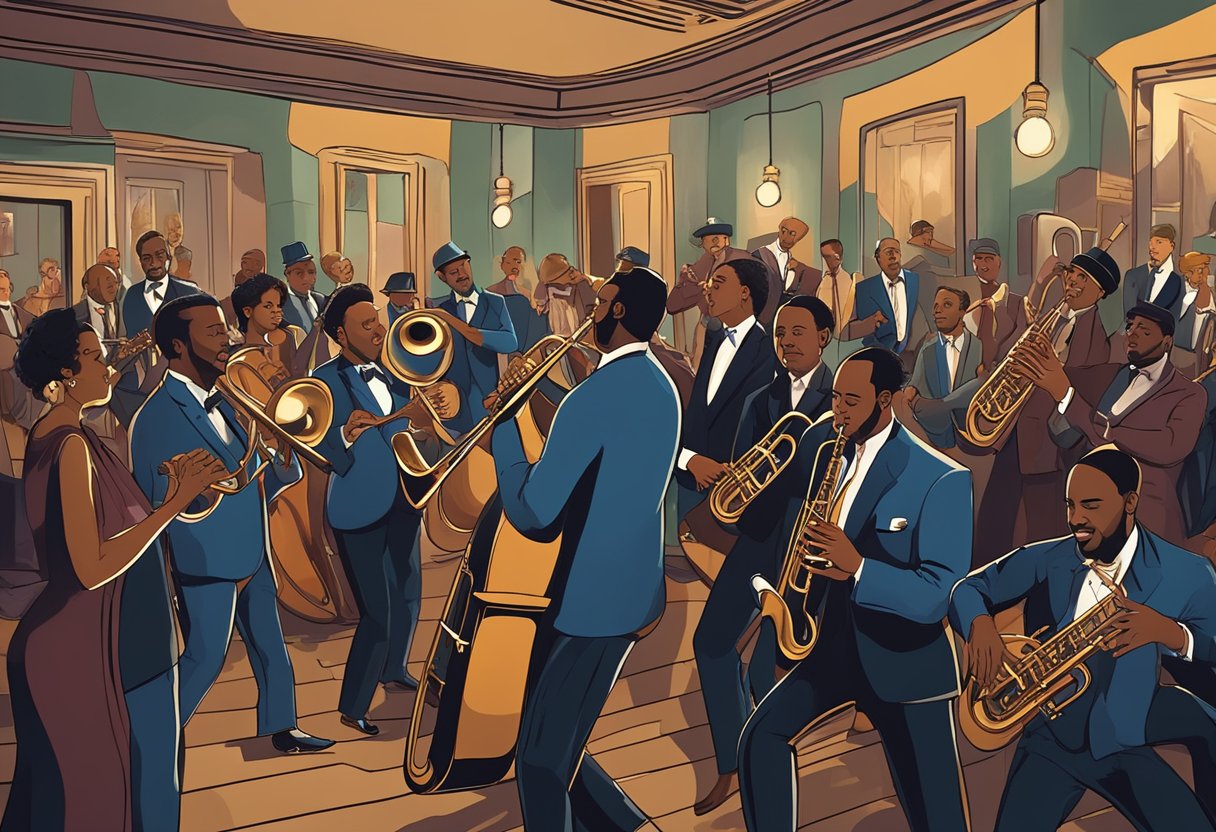
The Origins of Jazz trace back to diverse musical traditions, especially those rooted in African-American experiences of the late 19th and early 20th centuries. This section uncovers how the cradle of jazz in New Orleans and the influence of ragtime and blues played pivotal roles in forming this unique genre.
New Orleans Roots
At the heart of jazz’s emergence was New Orleans, a melting pot of cultural influences where music was integral to life. The city’s vibrant community of African Americans significantly shaped the genre, infusing it with elements from West African languages and work songs.
These early jazz musicians also brought aspects of spirituals and syncopated rhythms into their music, crafting a complex sound deeply rooted in their cultural history. Street parades and funeral processions in New Orleans became the focal points, where bands would regularly play and improvisation—a hallmark of jazz—thrived.
Influence of Ragtime and Blues
Intertwined with jazz’s development were the genres of ragtime and blues. Ragtime introduced the syncopated rhythms that would become a staple of jazz’s unique sound, characterized by its dynamic and off-beat melodies. On the other hand, the blues contributed the blue note, expressions of melancholia and soul, embodying the African American experience through heart-rending lyrical content.
Both styles were instrumental in jazz’s growth, providing a framework for the spontaneous and lively improvisations that jazz became famous for. Musicians of the era blended these elements to forge a new, dynamic musical experience that resonated with audiences and paved the way for jazz to flourish in the decades to come.
Prominent Jazz Musicians of the 1920s

The 1920s were a transformative era for jazz, with several musicians leaving a lasting legacy on the genre. They experimented with new sounds, elevated jazz to new levels of artistry, and became legends that shaped the music industry.
Louis Armstrong’s Impact
Louis Armstrong revolutionized jazz with his innovative techniques on the trumpet and unforgettable vocals. His Hot Five and Hot Seven recordings are seminal works, showcasing his talent for improvisation and his ability to transform jazz into a soloist’s art form.
King Oliver’s Contribution
As a mentor to Louis Armstrong, King Oliver was a pivotal figure in the jazz world. Famous for his expressive cornet playing, Oliver’s Creole Jazz Band was a cradle for nurturing some of the most influential musicians of the time, including Armstrong himself.
Duke Ellington’s Orchestration
Duke Ellington, a master of composition and orchestration, led one of the most distinctive bands in jazz history. His elaborate arrangements and the sophisticated style you could hear at the Cotton Club performances established him as a major force in the American music scene.
Female Jazz Pioneers
Women like Bessie Smith and Ma Rainey brought powerful and emotive voices to the genre, earning them titles like “Empress and Mother of the Blues.” Their performances and recordings played a crucial role in popularizing jazz, bringing the depth of its African-American roots to a broader audience.
Jazz Dance and Social Impact

The 1920s saw remarkable changes in American society, many of which were propelled by the Jazz Age. These shifts were most prominently visible in the realms of dance and the accompanying societal norms, particularly through the Flapper Movement and various popular dances of the time.
The Flapper Movement
The Flapper Movement symbolized a new era for American women in the 1920s—marked by bold fashion choices and a desire to challenge traditional gender roles. Flappers were recognized for their bobbed hair, shorter skirts, and the freedom they embraced in their behavior and dance.
This cultural shift was a clear divergence from previous social conventions, as flappers expressed youthfulness and a zest for life that stood in contrast to the more conservative values of the previous generation.
Dance Craze: Charleston and More
Dance was a vivid expression of the times, with Charleston becoming the epitome of the Jazz Age’s vibrant energy. The Charleston, a lively dance with swinging arms and quick steps, encapsulated the spirit of rebellion against the staid social norms of the day.
Other popular dances, such as the Lindy Hop, also gained popularity, encompassing a sense of freedom and fun, traits revered by the youth of the 1920s. Jazz dance influenced not only the way people moved but also how they interacted across racial and cultural lines, introducing new rhythms and movements to wide audiences.
The Jazz Age and American Culture
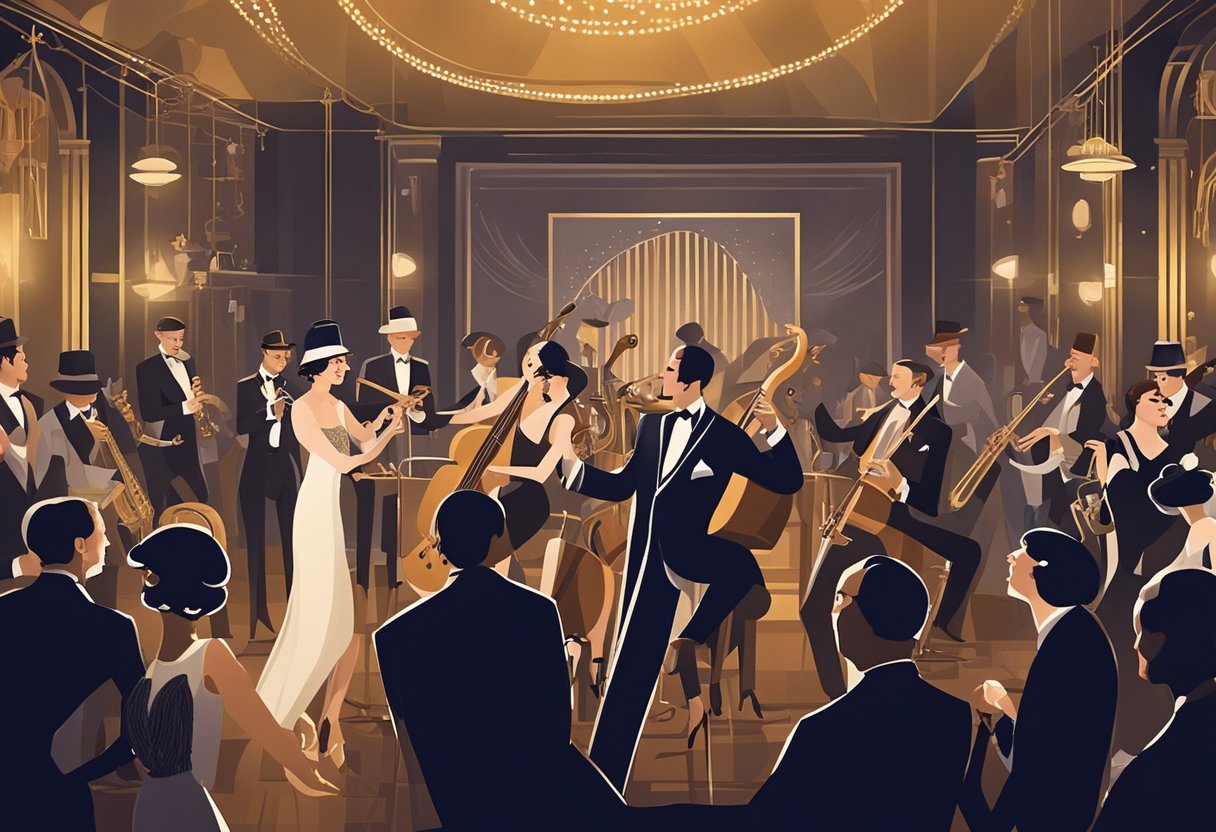
The Jazz Age was a time of profound cultural change, from flappers and speakeasies to an explosion in arts and entertainment. This period reflected shifting attitudes and lifestyles after the First World War, encapsulated by the works of F. Scott Fitzgerald and the birth of consumer culture.
Roaring Twenties Lifestyle
The Roaring Twenties were synonymous with economic prosperity and cultural dynamism. Americans embraced new freedoms and leisure activities, signifying a departure from pre-war conservatism. Bold, new fashions like flappers young women with bobbed hair and short skirts, embodied the spirit of emancipation and modernity.
The introduction of the automobile revolutionized mobility, while radios and movies became fixtures in everyday life, reflecting and shaping the era’s social norms.
Literature and the Jazz Influence
Literature of the 1920s, notably F. Scott Fitzgerald’s “The Great Gatsby,” captured the essence of the Jazz Age. Through his evocative prose, Fitzgerald painted a lucid portrait of a society obsessed with wealth and trapped in a cycle of pleasure-seeking. He was a key figure of the Lost Generation, a group of American writers disillusioned by the destruction of the First World War and the superficiality they perceived in society.
Jazz and American Morale Post-WWI
Jazz was not merely a genre of music; it was a vibrant, pulsating soundtrack to a nation seeking to redefine itself after World War I. This period, known as the Jazz Age, significantly boosted American morale.
The music provided a sense of hope and an emotional outlet, symbolizing the nation’s capacity for resilience and renewal. Concurrently, the passing of the 18th Amendment (Prohibition) sparked an underground surge of speakeasies, where jazz thrived, and the societal norms were challenged as citizens rebelled against Prohibition’s constraints.
The 19th Amendment granted women the right to vote, dovetailing with the era’s progressive spirit and the sense of empowerment that jazz music often invoked.
Influence of Jazz on Other Art Forms

Jazz, originating as a distinct musical genre in the early 20th century, profoundly influenced various art forms in the 1920s. This era in American history saw an intertwining of music with visual arts, design, literature, and film, leading to the emergence of new cultural expressions.
Jazz in Visual Arts and Design
- Art Deco: Jazz’s vibrant energy and sense of movement heavily inspired the Art Deco movement. Design elements like zigzags, bold colors, and streamlined forms mirrored the rhythmic dynamism of jazz.
- Harlem Renaissance: Visual artists of the Harlem Renaissance incorporated jazz themes into their works, capturing the tempo and improvisational nature of the style, reflecting a critical cultural awakening of African-American expression.
This cross-pollination of jazz with visual mediums expanded the public’s appreciation of the genre and heralded a stylistic revolution in American art and design.
Jazz in Literature and Film
- Literature: Writers of the era, influenced by jazz’s improvisational and evocative aspects, mirrored the spontaneity of the genre in their narrative styles, contributing significantly to the lexicon of American literature.
- The Jazz Singer: Recognized as the first significant talkie, this landmark film combined the novel technology of synchronized sound with the jazz-infused zeitgeist, revolutionizing the movie industry.
From literary masterpieces to cinematic innovations, jazz’s influence extended well beyond music, encapsulating the essence and the pace of the Roaring Twenties.
Prohibition and the Speakeasy Scene
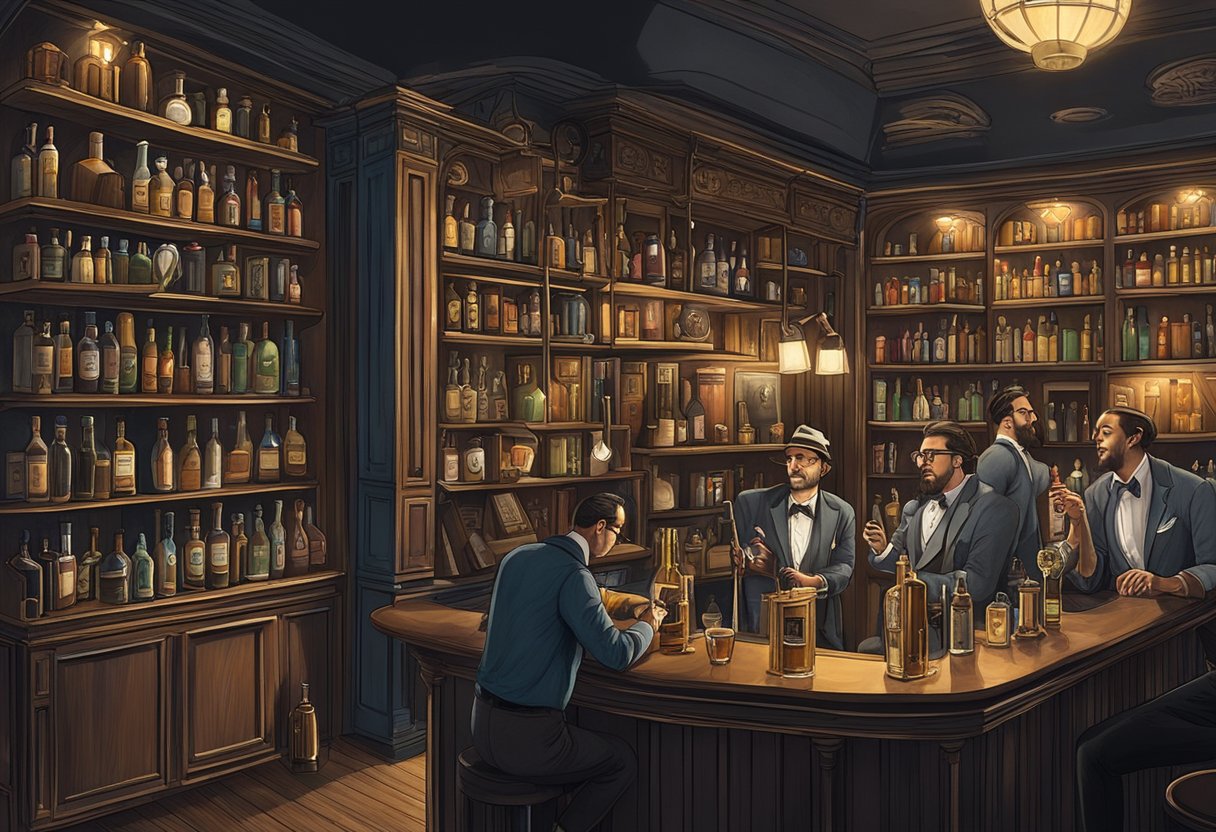
The era of Prohibition in the 1920s was marked by a ban on alcohol, which gave rise to secretive speakeasies and the intertwining of jazz music with these illicit havens.
Bootlegging and Jazz
During the Prohibition era, the Volstead Act enforced a nationwide ban on alcohol production and sales, leading to the emergence of bootleggers who illegally distilled and distributed alcoholic beverages. This underground trade provided the perfect environment for jazz to flourish.
The spirit of rebellion and cultural innovation associated with jazz found a sympathetic echo in the actions of figures like Al Capone, who capitalized on the public’s thirst for alcohol and desire for social spaces. Bootlegged alcohol fueled the speakeasy scene where jazz musicians performed, creating a symbiotic relationship between the two.
Speakeasies as Jazz Hubs
Speakeasies became the cultural hubs of the 1920s United States, often hidden in plain sight behind unassuming fronts. These illicit establishments were more than just places to obtain alcohol; they were vibrant social settings where people of various backgrounds mingled. Here, jazz musicians found eager audiences, and these venues became stages for African-American talent to pioneer new styles and captivate crowds.
The popularity of jazz soared as live performances in New York and Chicago speakeasies became the heartbeat of the Roaring Twenties.
Evolution of Jazz Styles

During the 1920s, jazz experienced transformative growth and diversification, heavily influenced by regional variations and the emergence of new techniques among musicians.
Swing’s Rise to Popularity
Swing, characterized by a strong rhythm section and a flowing groove, emerged as a dominant form of jazz music. In New York, bands started to incorporate swing into their performances, captivating audiences with their energetic sounds.
Notably, the evolution of swing was marked by its danceability, which captured the spirit of the Jazz Age.
Jazz’s Regional Diversification
The regional diversification of jazz styles played a crucial role in the evolution of the genre. While New Orleans jazz emphasized collective improvisation and a front line of trumpet, clarinet, and trombone, Chicago jazz focused more on individual musicians and solos.
New York became a hub for jazz evolution, integrating features from these regional styles and producing prominent jazz figures whose influence extended beyond the 1920s.
Jazz Musicianship and Composition
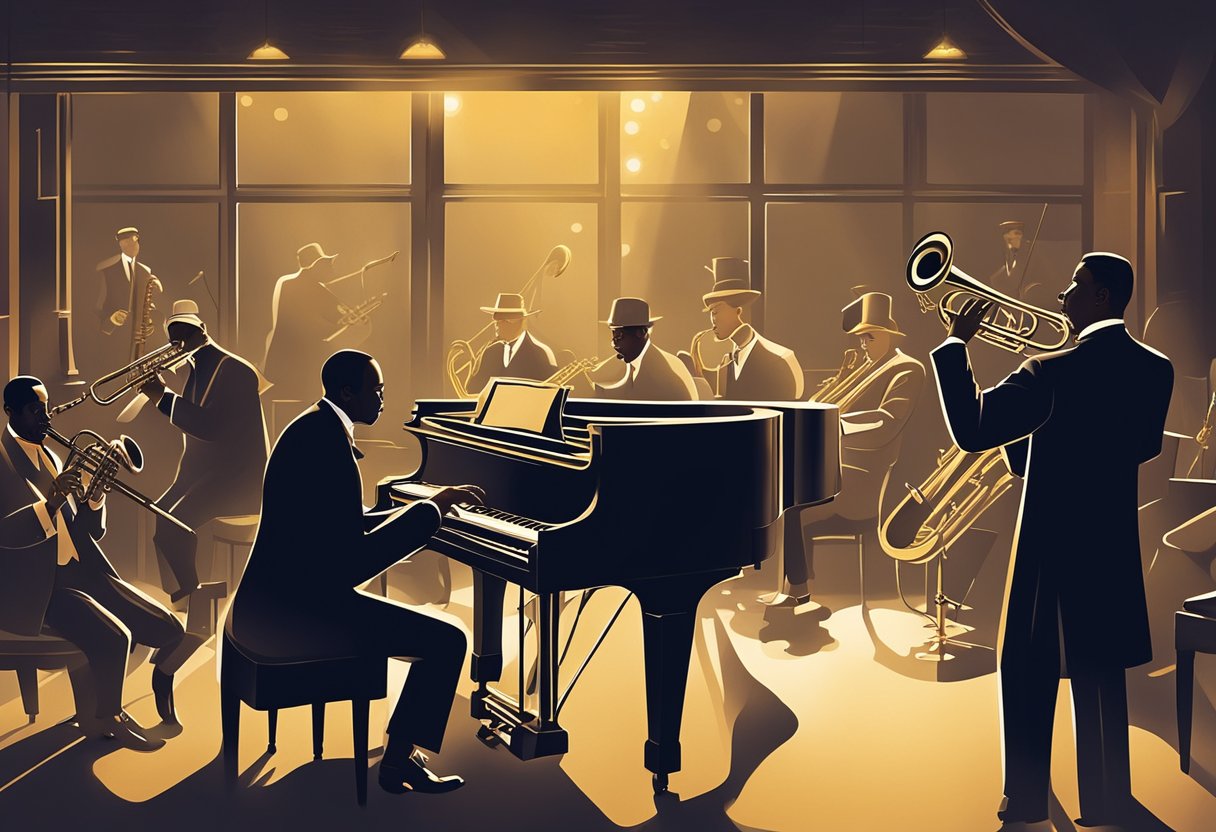
Jazz in the 1920s saw a remarkable evolution in both musicianship and composition. At the heart of this creative explosion was a group of gifted musicians whose work set the stage for jazz to become a defining musical genre of the era.
Role of Improvisation
Improvisation served as the lifeblood of 1920s jazz. Musicians developed an extraordinary ability to create spontaneous yet coherent melodies and harmonies. Each performance was unique, as jazz players improvised new solos on the spot, drawing from an extensive vocabulary of musical phrases and personal expressiveness.
This personalized way of playing elevated the role of individual musicians, with figures like Louis Armstrong revolutionizing jazz through their improvisational genius.
Instruments and Ensemble Arrangement
Jazz ensembles typically consisted of both rhythm sections and horn sections. The rhythm section—comprising piano, banjo (later replaced by guitar), double bass, and drums—laid down the foundational groove, while the horns, including saxophones, trumpets, and trombones, interwove melodies and countermelodies.
- Piano: It provided harmonic structure and was integral to setting the pace of jazz compositions.
- Banjo/Guitar: These stringed instruments added a rhythmic backdrop that was essential to the music’s drive.
- Saxophone: As a leading voice, the saxophone often carried the main melody, injecting deep emotion into compositions.
The precise arrangement of these instruments in an ensemble was tailored to balance the need for a tight, synchronized group sound while allowing space for solo improvisations, thus shaping the fluidity and dynamism characteristic of 1920s jazz.
Recording and Broadcasting Jazz

The 1920s marked a significant era for jazz, as technological advancements in recording and broadcasting propelled the genre to new heights of popularity. This period witnessed jazz evolving from live performances to becoming a mainstay in American households through radios and phonographs.
Jazz on the Radio
Jazz found a new platform with the advent of radio broadcasting. Radio stations began to feature jazz programs, which significantly broadened the audience for the genre. Notable locations like the Cotton Club in New York City would often broadcast live jazz sessions, allowing people from all over the country to tune in and experience the music as if they were there.
Los Angeles and Hollywood stations followed suit, entrenching jazz as a form of entertainment and a cultural movement that echoed throughout the United States.
Jazz Recordings and Musicians’ Fame
Recordings during the Jazz Age were a crucial component in establishing the fame of jazz musicians. Pioneering artists could now reach a wider audience through records, which were becoming more accessible due to the growth of the phonograph industry.
The ability to distribute their music widely allowed musicians to gain recognition far beyond their local scene, with some, like Louis Armstrong becoming household names. The recording technology gave permanence to improvisational jazz performances, thereby influencing generations of musicians to come.
Jazz’s Influence on Global Music
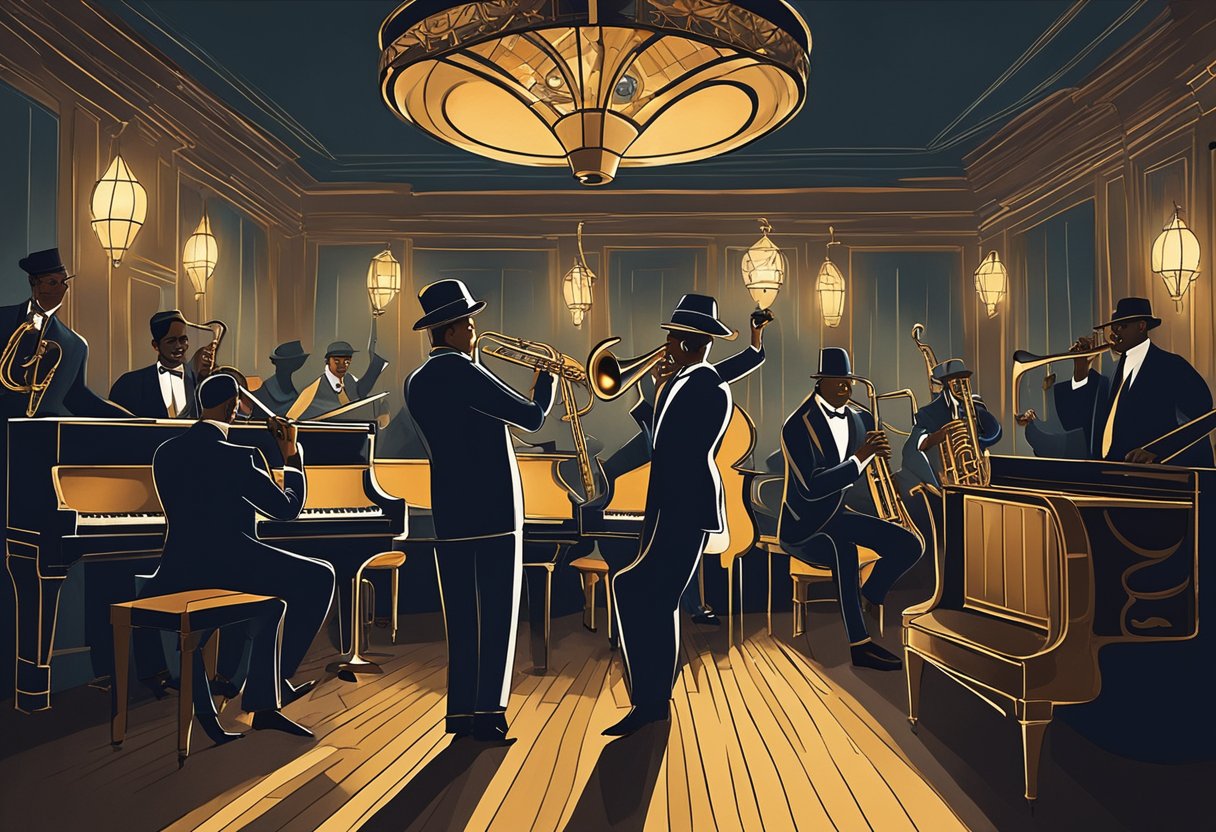
Jazz, originating in the United States, became a dynamic force in the global music scene through the 1920s. This cultural exchange influenced and evolved music styles worldwide, notably in Europe and beyond.
European Jazz Bands and Influence
The 1920s saw the emergence of European jazz bands that incorporated the essence of American jazz. Cities like Paris, which were cultural hubs, witnessed significant musical exchanges. They adapted the jazz idiom, creating a fusion that resonated with the European audience.
Notable bands from this era profoundly impacted the music scene, establishing long-lasting connections between the continents.
In Paris, the jazz atmosphere was vibrant, with numerous venues open to the evolving sound of jazz. Musicians from New York traveled to Paris, becoming integral to this cultural interplay. This exchange resulted in a distinctive European jazz character that blended jazz fundamentals with European sensibilities and classical traditions.
The Spread of Jazz Worldwide
The worldwide spread of jazz was propelled by records and live performances. They were the medium through which the evolution of this genre was communicated and shared. The influence of jazz extended beyond Europe to other continents, fostering a worldwide movement.
As jazz resonated globally, it impacted various music forms, giving rise to new genres and influencing existing ones. This global dispersion was not just a transfer of a musical style but a form of cultural exchange. Jazz served as a conduit for musicians to express shared human experiences, regardless of geographical boundaries.
Economic Impact and The Great Depression
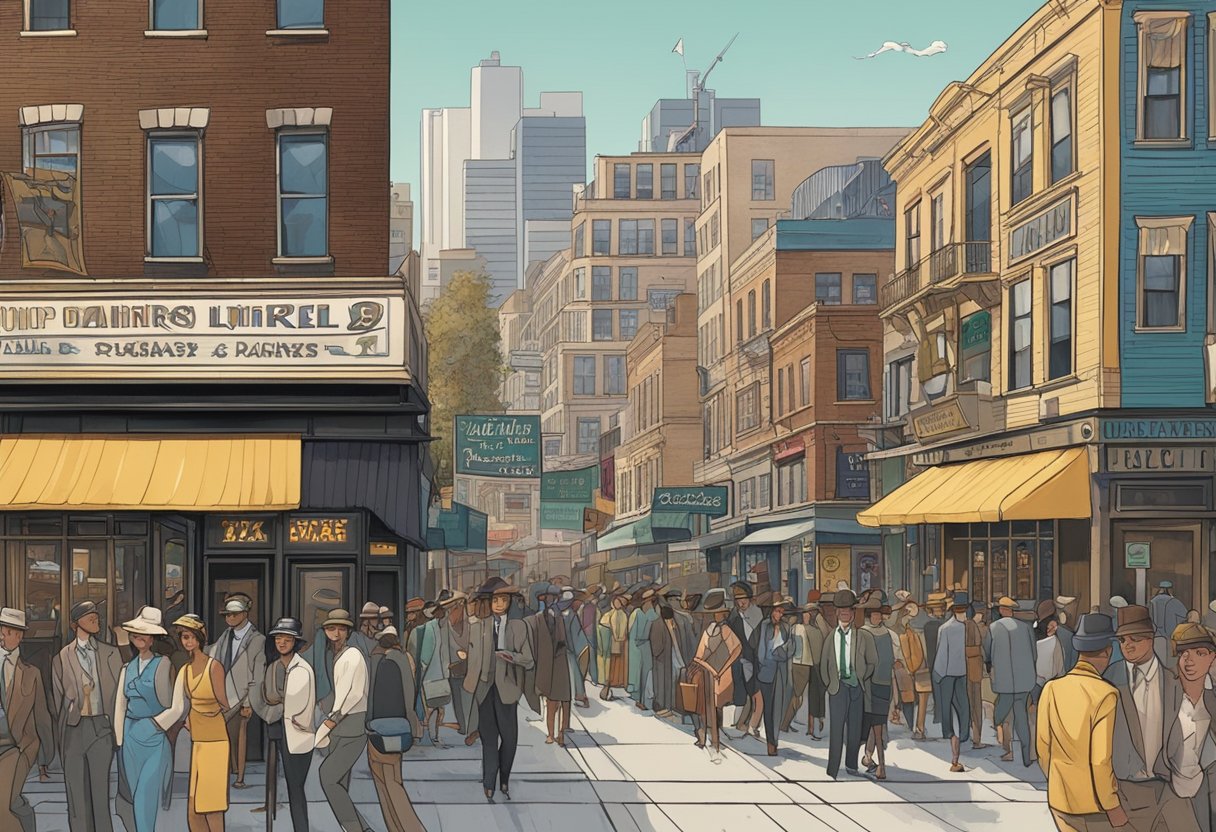
The Jazz Age was a period of significant economic fluctuation, witnessing immense growth followed by a severe downturn. Jazz music, while initially thriving in the economic boom, eventually faced the challenges of the Great Depression.
Jazz During Economic Hardship
During the Great Depression, the United States faced unprecedented economic hardship. Industries struggled, unemployment soared, and many Americans grappled with financial despair. Yet, jazz remained a form of emotional reprieve and cultural expression.
Artists like Fats Waller navigated this era by adapting their music to reflect the realities and resilience of their audiences. Despite the economic turmoil, jazz remained an enduring fixture in American entertainment, providing solace and continuity in uncertain times.
Jazz’s Role in the Consumer Economy
In the booming 1920s, before the market crash, jazz symbolized the era’s prosperity and an indicator of the emerging consumer economy. It fueled a dynamic culture that encouraged the embrace of modernism and personal freedom.
Jazz promoted new dance and fashion styles, with the music often relying on the burgeoning credit system to finance instruments and phonograph records. Pioneers like Duke Ellington rose to fame during this time, using the economic boom to reach wider audiences.
The intersection of jazz and consumerism highlighted the genre’s economic impact, as it both contributed to and benefited from America’s temporary financial exuberance.